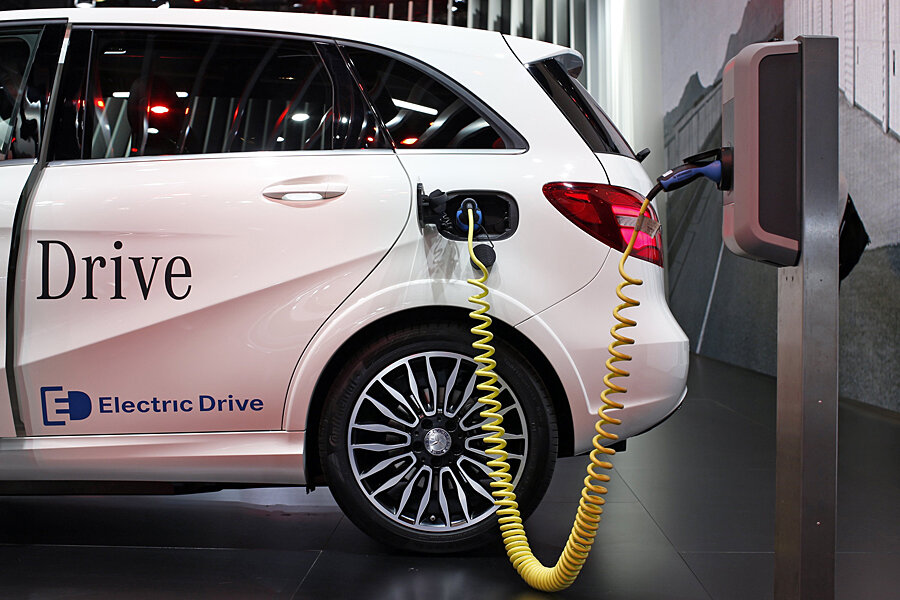Will falling gas prices kill the electric car?
Loading...
Sales of electric vehicles continue to rise but low gasoline prices are threatening to stall progress.
From January through September of this year, sales of plug-in hybrid electric vehicles (PHEVs) and battery-powered electric vehicles (BEVs) reached a cumulative total of 88,149. That’s a 30 percent increase over the same period in 2013. That figure is also nearly triple the 31,377 PHEVs and BEVs sold in 2012.
There are now 255,766 plug-in and full electric vehicles on U.S. roads. It’s far from President Barack Obama’s goal of putting 1 million electric vehicles on the roads by 2015, but the sector is finally picking up steam.
Including hybrids, which are much more established than electric vehicles, the “electric drive market share” now makes up 3.59 percent of the total car market in the United States, according to the Electric Drive Transportation Association (EDTA). (Related: Batteries May Finally Be Having Their Day)
The growing market share for electric vehicles is largely attributable to declining costs. Electric vehicles are quickly becoming more affordable, and vehicle sales are rising correspondingly.
In 2013, the Nissan Leaf slashed its sale price by $6,500, to $28,800. The 2014 Chevy Volt is also selling $5,000 cheaper, with a starting price of $34,995. The thrifty Mitsubishi i-MiEV is now selling at $22,995, or $6,130 less than it used to.
Ford is the most recent price cutter. The Detroit automaker announced that its Focus Electric will now sell for $6,000 less, coming in at $29,995. That’s after a $4,000 price reduction in 2013.
Most of these prices are still relatively high compared to conventional combustion engine cars, but there is also a $7,500 federal tax credit to help defray costs. That allows the lower-end Mitsubishi i-MiEV to sell for $15,495 after rebate. Then there are a slew of state tax incentives that could help buyers further.
But car companies may also be cutting EV prices because demand for them remains relatively lackluster compared to the broader auto market. Growth in sales may be brisk, but it is starting from a low base.
To make matters worse for the sector, gasoline prices are rapidly dropping due to the slump in crude oil prices. Gas prices across the country averaged $3.07 per gallon on Oct. 23 --16 percent lower than the $3.68 per gallon average around the July 4 holiday.
Ironically, President Obama’s goal for putting 1 million electric vehicles on the road by next year is being slightly undermined by one of the signature achievements of his presidency: the historic fuel economy standards he put in place in his first term. His administration is requiring automakers meet an average fuel economy of 35.5 miles per gallon by 2016, and 54.5 miles per gallon by 2025.
Automakers have responded by making traditional combustion engine vehicles much more efficient. This reduces the pain at the pump for the average driver, but it also shrinks the benefit that drivers gain by purchasing electric vehicles instead of conventional ones. (Related: We Are On The Verge Of An Electric Car Battery Breakthrough)
The U.S. does not have the most hospitable environment for EVs compared to other countries. Just take a look at Norway, arguably the best place on the planet for electric vehicles, according to The Energy Collective. That is because gasoline prices are high, electricity prices are low, electric vehicles are exempted from steep taxes placed on other cars, and Norway has invested heavily in public charging stations for EVs. Add in additional benefits for electric vehicle owners, such as being exempt from parking fees and tolls, and EVs become as affordable as traditional gasoline-powered vehicles.
And the receptive environment has yielded success – EVs captured 11.2 percent of the auto market in Norway in September, and four EV models are among the country’s top 20 selling cars.
But for the United States, many of those conditions are not replicable. Congress can’t even bring itself to index the federal gas tax to inflation, which has been stagnant at 18.4 cents per gallon since 1993, let alone raise it. In Norway, steep taxes mean a gallon of gasoline costs $9.79 per gallon, the most expensive on the planet.
The EV market will continue to grow in the United States, but it may quite a long time before an electric vehicle becomes a best seller.
By Nick Cunningham of Oilprice.com
More Top Reads From Oilprice.com:







